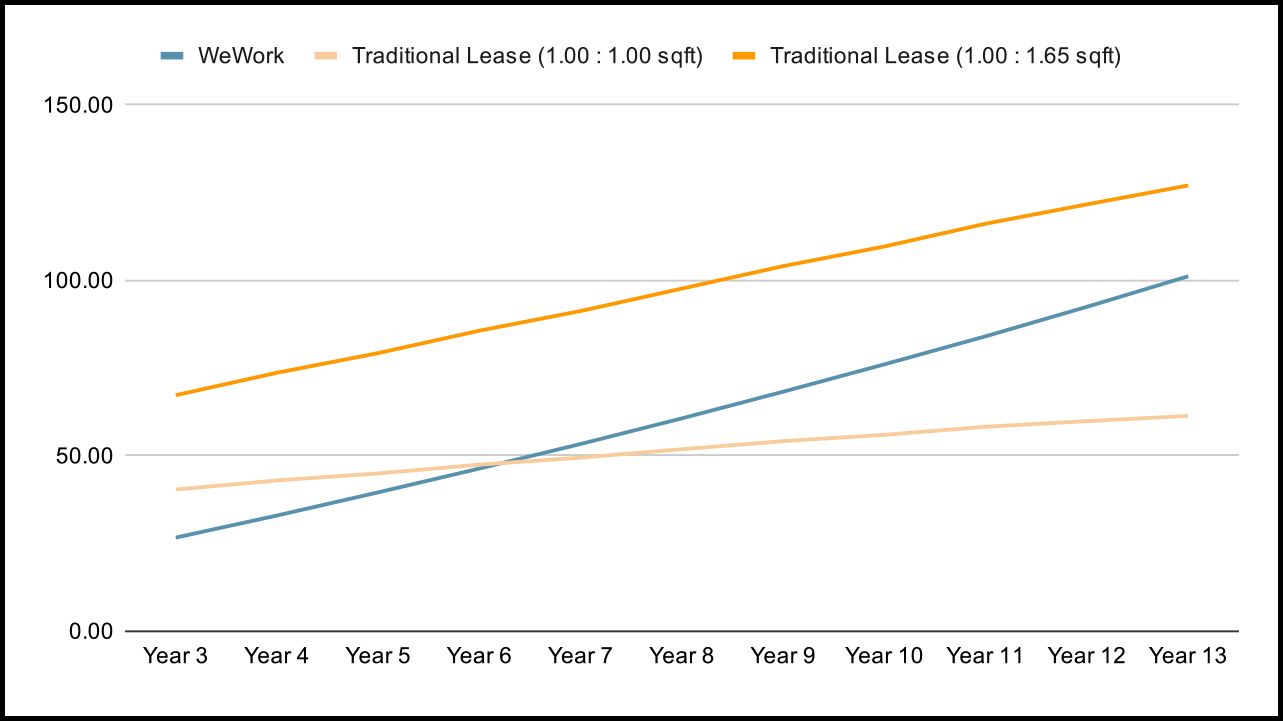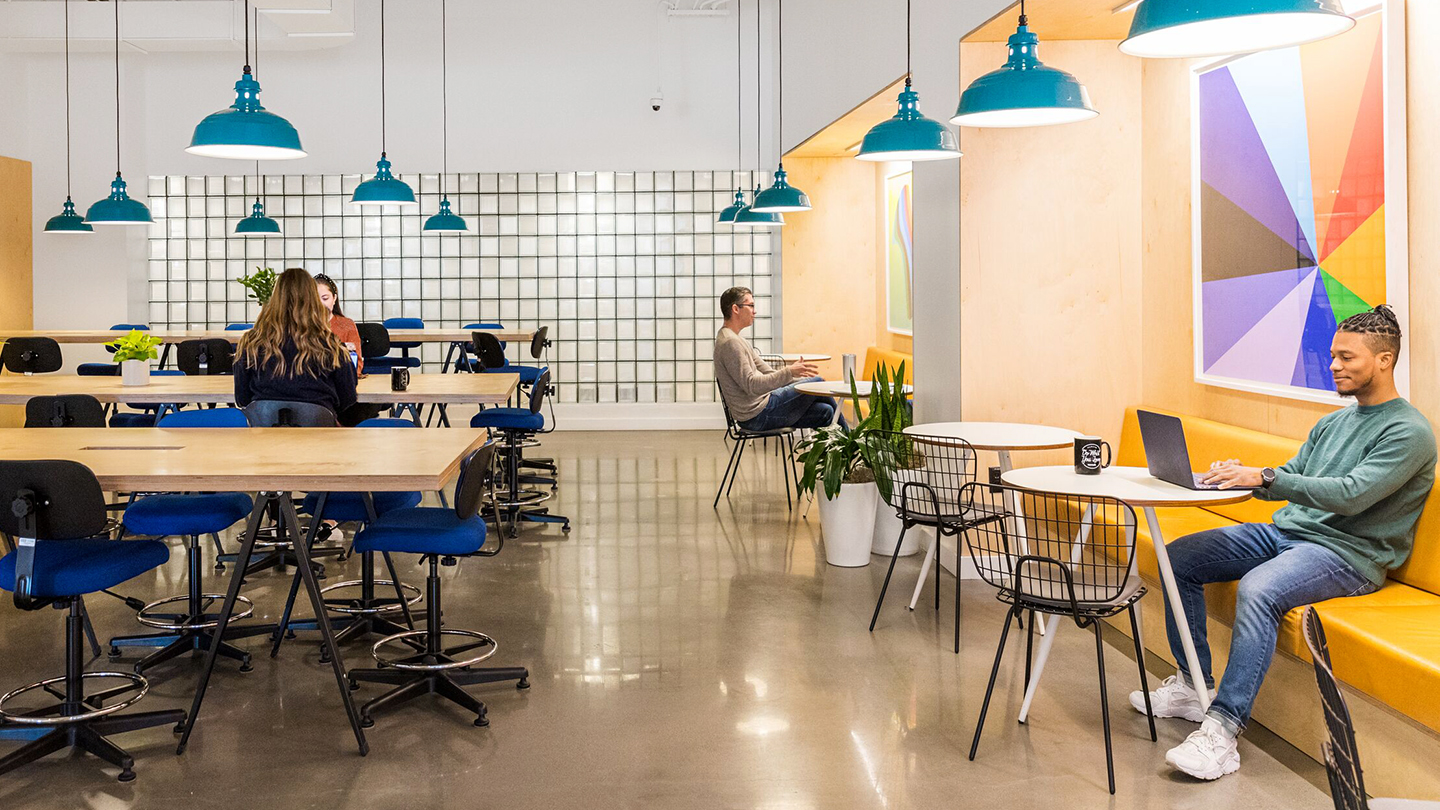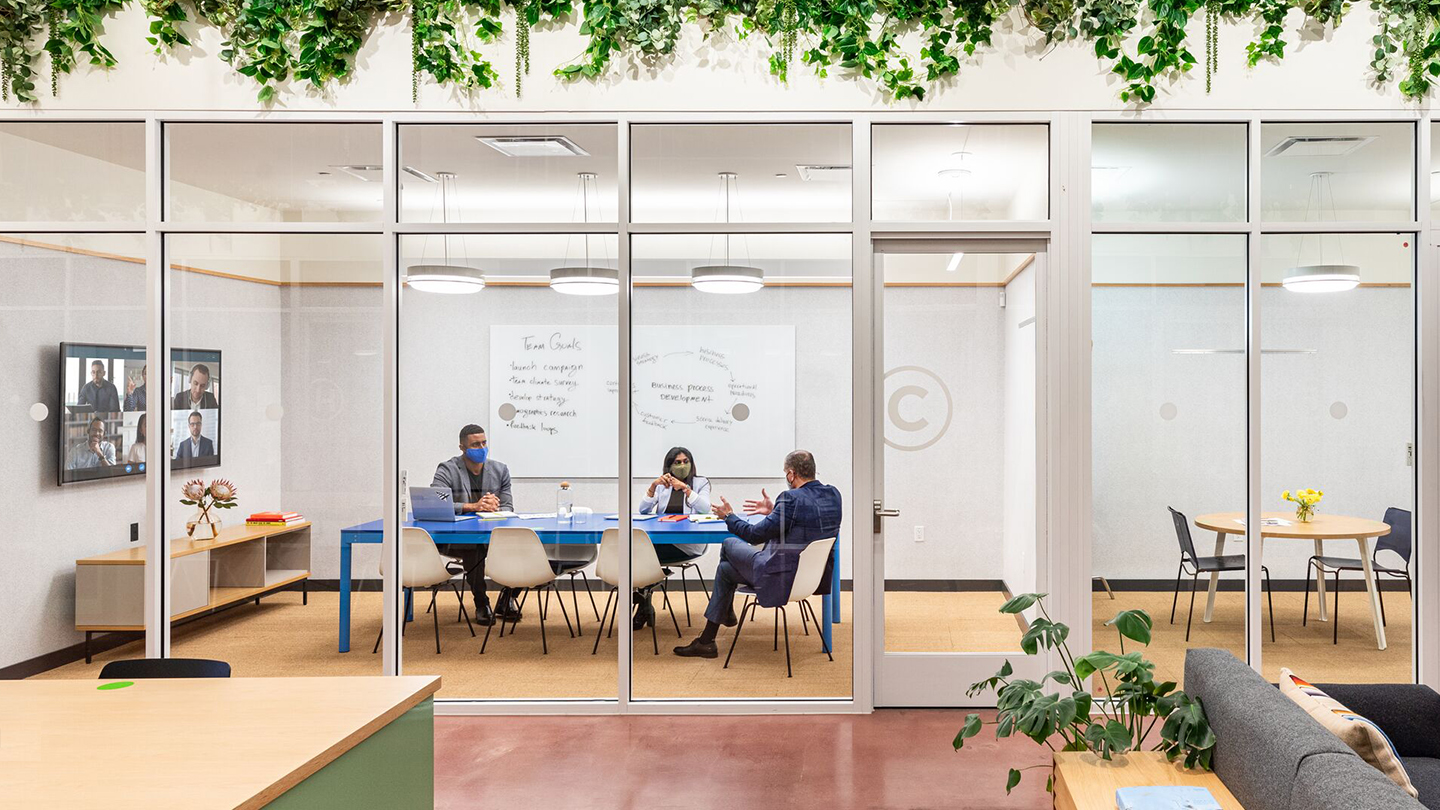Traditionalists have always struggled with how to compare the cost of flexible property versus the cost of long-term leases. The inherent differences between the two offerings make an apples-to-apples comparison challenging.
But recently, property performance metrics have shifted from cost per square foot, or total occupancy costs, to something that is more employee-centric, such as costs on a per person basis. And that makes it easier to make a side-by-side comparison. However, the focus on cost (both per square foot and per person) often comes at the expense of other organisational goals, and prevents commercial property from adding strategic value to businesses.
As a result of the growing influence that human resources and chief financial officers have on commercial property functions, property management teams are now being challenged to develop property strategies that incorporate innovative solutions and agile workplace practices to drive employee productivity, improve both talent attraction and retention, and contribute to environmental, social, and governance (ESG) agendas.
We know that partnering with flexible property providers to implement agile practices leads to an improved employee experience because they provide a consistent experience through access to exceptional workspaces and amenities while also empowering employees to decide where and when they work.
This shift away from a focus on cost—which has resulted in the adoption of balanced scorecards that include a variety of performance metrics—has accelerated over the past year partly due to the impact that COVID-19 has had on utilisation rates, and has increased occupiers’ willingness to adopt agile practices.
The property impact of agile practices
Looking at a sample of large business transactions that WeWork has executed over the past 12 to 18 months, on average, the adoption of agile practices has resulted in a roughly 30–40 per cent efficiency gain for the company. To understand how this plays out for a typical property decision-making process, let’s look at a hot commercial property market: London.
We’ll start with the traditional metric for flexible property space versus long-term lease comparison: cost per square foot. All things being equal, the average price per square foot to occupy flexible space in London is roughly £165 (US$227)/sq ft per year, while the average annual cost to occupy a 15-year lease would be around £125 (US$173)/sq ft per year. (These figures are based on standard market prices.) Most traditionalists would say flexible property space is at a 30 per cent premium. This begs the question: is that what flexibility, business agility, and an improved employee experience is worth?
Not necessarily. If we shift the viewpoint from cost per square foot to cost per employee, the cost of flexible space is on average 20–30 per cent lower than that of traditional space.
How can you have a higher per-square-foot rate but a lower cost-per-employee rate?
This is because employees in a WeWork have access to so much more space than just their office space. In London, for example, WeWork has over 1 million square feet of amenity space programmed across our buildings, which all of our members can access. By leveraging WeWork’s full product suite, which includes All Access or Pay Per Use memberships, employers can start implementing agile practices while also keeping an eye on costs.
Now that we have addressed the cost per employee, how can you start thinking about the cost per square foot? One of the simplest analogies that I like to reference is insurance, like for your car or home. Insurance is a financial hedge against potential future costs. Likewise, so is flexible property.
Flexible property options have much shorter commitment periods—from as short as one month to as long as 10 years—and can often include downsize and expansion options. Traditional leases have long-term, fixed commitment periods, typically between 10 to 15 years, without the ability to scale up or down easily.
Any premium paid for flexible property can be thought of as a hedge against any potential costs to exit traditional lease space. With flexible property, just pay for the space you need at a given time without being locked in. If you have a traditional lease, it is complicated, time-consuming, and expensive to exit early through subleasing, assigning, or surrendering.
Crunching the numbers for the true value of flexibility
To quantify the value of flexibility, WeWork conducted a lease disposal analysis on 50,000 square feet (by way of subleasing) to quantify the costs associated with exiting a traditional lease after three years of occupancy. Then we matched these costs against a three-year flexible agreement with WeWork.
For most heads of commercial property, subleasing is a cost-mitigation exercise because the rental liability is already pre-committed for the remaining life of the lease. In order to achieve as close to market-level rent as possible, they must take into account pre-leasing vacancy, sublease incentive packages, and broker fees in any cost analysis—in addition to considering the undepreciated capital cost that may need to be written off.
After factoring in 12 months of pre-leasing vacancy, 12 months of free rent for every five years of sublease term, and a capital expenditure write-off, the cost of the traditional lease over the same three-year occupational period in a WeWork would be 35 per cent higher. This assumes an occupier takes the same amount of space in a WeWork as in a traditional lease; if an occupier takes 40 per cent less direct office space with WeWork and substitutes it with giving its employees WeWork All Access products, the cost differential increases to 60 per cent.
In this exercise, the break-even point between a traditional lease and WeWork occurs between years six and seven. However, once we layer in potential efficiency gains, the absolute cost of exiting a lease is always higher than occupying space with WeWork.

According to the US National Bureau of Economic Research (NBER), from the 1950s to the present, US economic cycles have lasted about five and a half years on average. Given that, any occupier of a 10-year traditional lease should expect to go through two economic cycles. With this in mind, we have to ask ourselves, how wise is it to lock in an expensive property contract for 10 years?
The calculations bear out: in instances of severe sensitivity, it would make sense to commit to a higher percentage of flexible property space to hedge against the financial consequences of having to exit a lease early.
Nikhil Chanrai is a director on the Enterprise team at WeWork, responsible for the implementation and execution of transaction and portfolio strategies for WeWork’s largest clients.
Rethinking your workspace?












